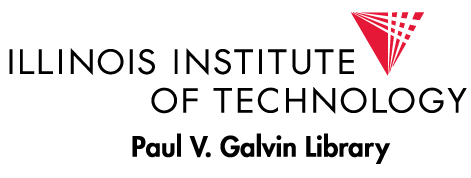Search results
(1 - 1 of 1)
- Title
- DO GENERAL EDUCATION HIGH SCHOOL STUDENTS IN A BASIC PHYSICAL SCIENCE COURSE IMPROVE UPON ATTITUDES TOWARD SCIENCE LEARNING AND CONTENT MASTERY FOLLOWING VIRTUAL/REMOTE FLIPPED INSTRUCTION OR VIRTUAL/REMOTE NON – FLIPPED INQUIRY – BASED INSTRUCTION?
- Creator
- Martino, Robert S.
- Date
- 2022
- Description
-
As we progress further into the 21st Century, high school science is being challenged on how to best deliver instruction to students. Teacher ...
Show moreAs we progress further into the 21st Century, high school science is being challenged on how to best deliver instruction to students. Teacher – centered instruction has long been de – emphasized in favor of inquiry – based instruction, although teacher – centered instruction still exists to a noticeable extent. Inquiry – based instruction, while more student – centered in its common practice, still involves the teacher as a guide during classroom direct instruction. Research has been ongoing to identify new and dynamic forms of science concept delivery that serve the needs of diversified science instruction (Keys & Bryan, 2001; Saldanha, 2007). Virtual instruction has become more commonplace, and it was fully implemented during this study. It has become incumbent upon science education researchers to explore and identify the most effective means of virtual instruction, means that are student – centered, engaging, interesting, and that both improve student science content understanding and attitudes toward science. Flipped instruction is a more recently – incorporated form of student – centered instruction that has students experiencing classroom routines at home and homework routines in class, and that is why this instruction is referred to as being “flipped.” Hunley (2016) examined teacher and student perception of flipped instruction in a science classroom, while Howell (2013) explored it in a ninth – grade physical science honors classroom. At the onset of this study, relatively few studies were available about this newer form of instruction within high school science instruction, no studies were available that involved high school general education physical science courses, and certainly no studies were available that compared virtual/flipped and non – flipped general education physical science instruction at the onset of this study. This study researched the effect of virtually – implemented flipped instruction on high school students’ understanding and attitude toward science. Instruction was completely virtual/remote (online), and at home, for all students in this study. In investigating the effect of this type of instruction, this study examined student academic performance and attitudes (and intentions and beliefs) toward science in two units of a high school Integrated Chemistry and Physics (Physical Science) course. Sixty – six students from Southlake High School, a midwestern U.S. high school, took part in the study. Sixty – four of those students took the unit assessments. Half of the students (test group) were instructed via virtual/remote flipped instruction and the other half (control group) were instructed via virtual/remote non – flipped, inquiry – based instruction during the first unit. During the second unit, the test group students who were instructed via virtual/remote flipped instruction switched with the control group and were instructed via virtual/remote non-flipped inquiry – based instruction, while the control group students who were instructed via virtual/remote non-flipped instruction were instructed via virtual/remote flipped instruction. The students in both groups were surveyed three times, using the Behaviors, Related Attitudes, and Intentions Toward Science (BRAINS) (Summers, 2016) instrument student questionnaire and survey for their attitudes (and beliefs and intentions) toward science (once prior to the first unit, once after the first unit, and once following the second unit). Student test results and survey responses were then analyzed to identify which instructional style was more effective for student learning and whether student attitudes (and intentions, and beliefs) favored one instructional style over the other. Student science attitudes (and beliefs and intentions) and academic performance were evaluated throughout the study. There was an increase in control group student science attitudes (and beliefs and intentions), from the pre – study survey to the post – unit 1 survey following their receipt of non – flipped virtual/remote instruction in the first unit. There was a lower increase in test group student science attitudes (and beliefs and intentions), from lower pre – study attitudes (compared with the control group) following the test group’s receipt of flipped virtual/remote instruction in the first unit,. Following the second unit, both the control group and test group again showed increases in attitude (and beliefs and intentions) compared with the pre – study survey results, with the control group again showing greater increases than the study group. Student academic performance favored the control group as it outperformed the test group in both the first unit and the second unit, even when the test group received the virtually – delivered flipped instruction in the first unit. The findings of the study showed that virtually implemented flipped instruction resulted in no advantage for the test group in terms of greater improvement in attitudes (or beliefs or intentions) toward science and no advantage for the test group in terms of learning science content in general education Integrated Chemistry and Physics (Physical Science). These results indicate that this form of teaching may not be effective in improving general education Physical Science student learning and student attitudes (and beliefs and intentions) toward science. Therefore, the use of virtually implemented flipped instruction in this general education science course will need to be further studied to determine its effect on student learning and student attitudes (or even beliefs and intentions) toward science.
Show less
